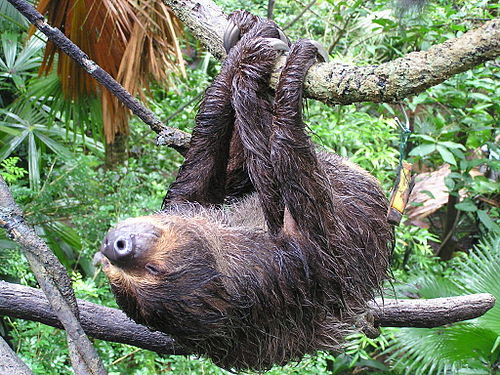Template:Species-2013-06
Species of the month
editHoffmann's Two-toed Sloth
editSome facts on this mammal:
Length: 58 to 70 cm.
Weight: 4 to 8 kg.
Distribution: South America.
Hebitat: Tropical rainforest canopy from sea level to 3,300 metres.
Diet: Mainly tree leaves; may also eat fruits and flowers.
Protection status: Least Concern (IUCN 3.1).
First described: By the German zoologist and explorer Wilhelm Peters in 1858.
Choloepus hoffmanni isn't the best candidate to win a running race. In fact this Two-toed Sloth has the record for the world's slowest mammal. So sedentary it is, that algae grows on its furry coat. The sloths come in two variants: the two-toed and three-toed, identified by the number of long, prominent claws that they have on each front foot. These animals are built for life in the treetops, spending nearly all of their time aloft, hanging from branches with a powerful grip of their long claws. Choloepus hoffmanni also sleep in trees, and they do this in abundance: between 15 and 20 hours every day. Even when awake they often remain motionless. At night they eat leaves, shoots, and fruit from the trees and get almost all of their water from juicy plants. Sloths mate and give birth while hanging in the trees and their young cling to their mothers and travel by hanging onto them for the first five weeks of their lives. The name of this animal commemorates the German physician and naturalist Karl Hoffmann.
See also: Species of previous months.
